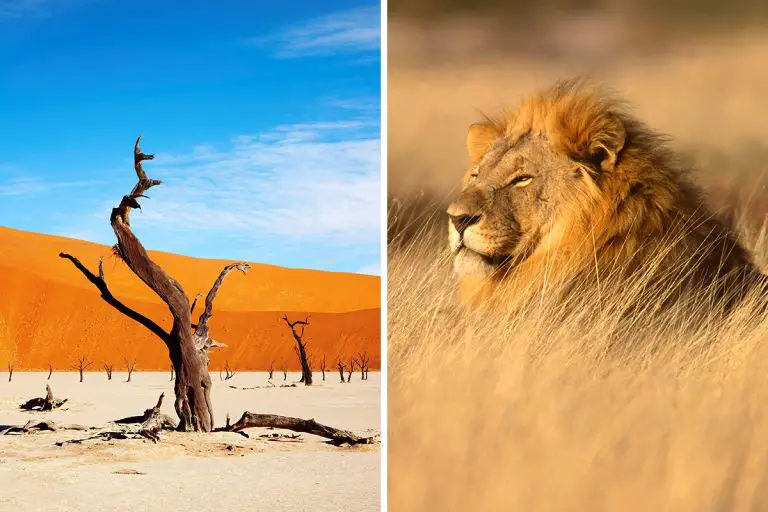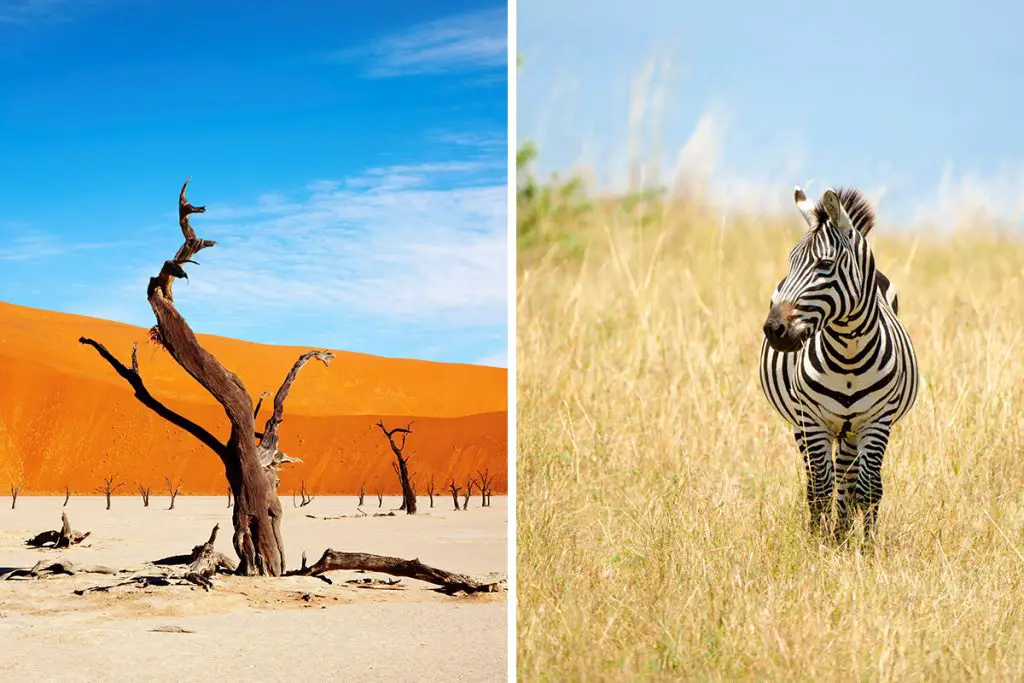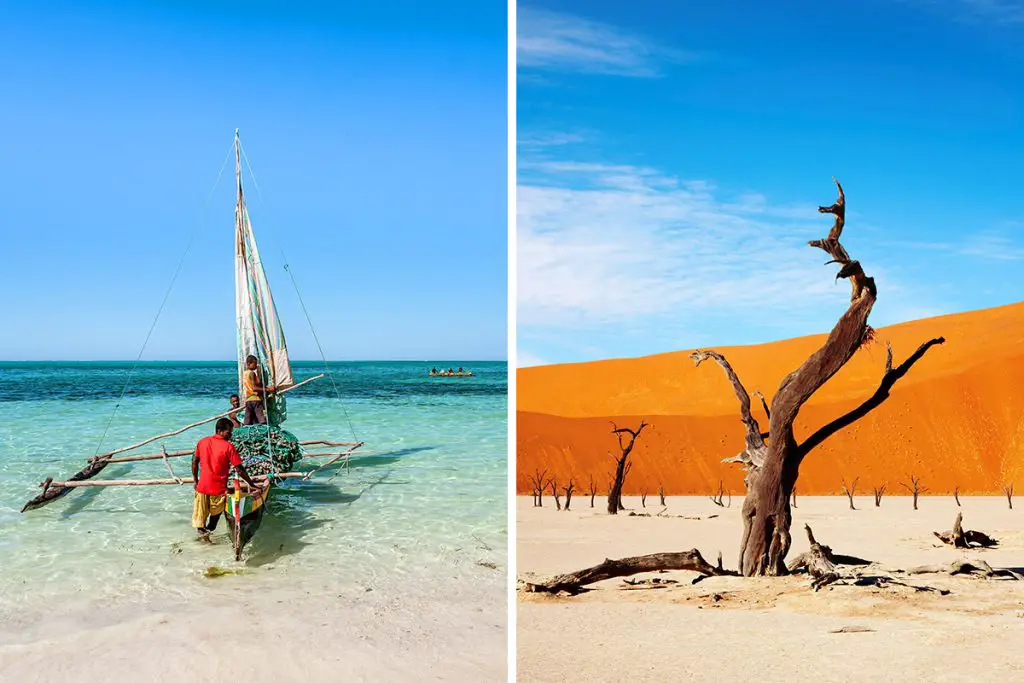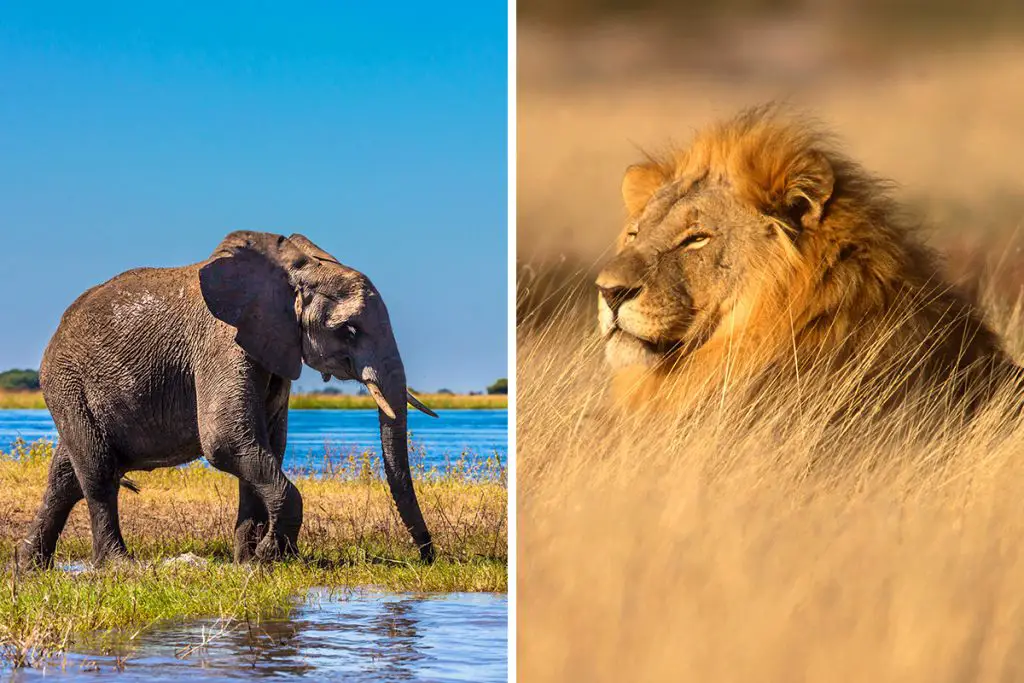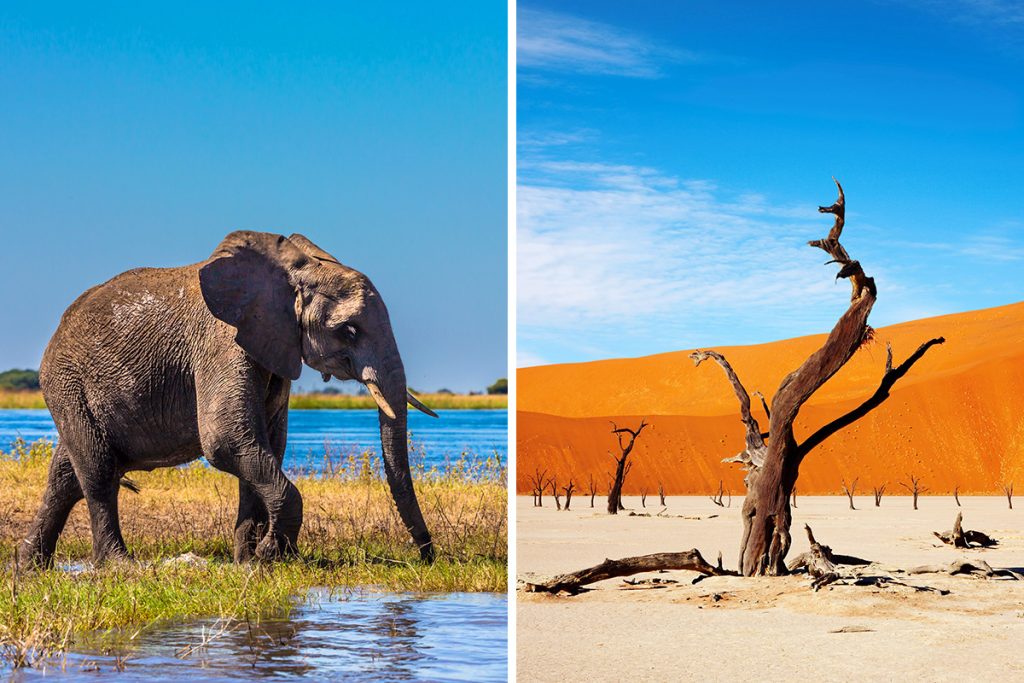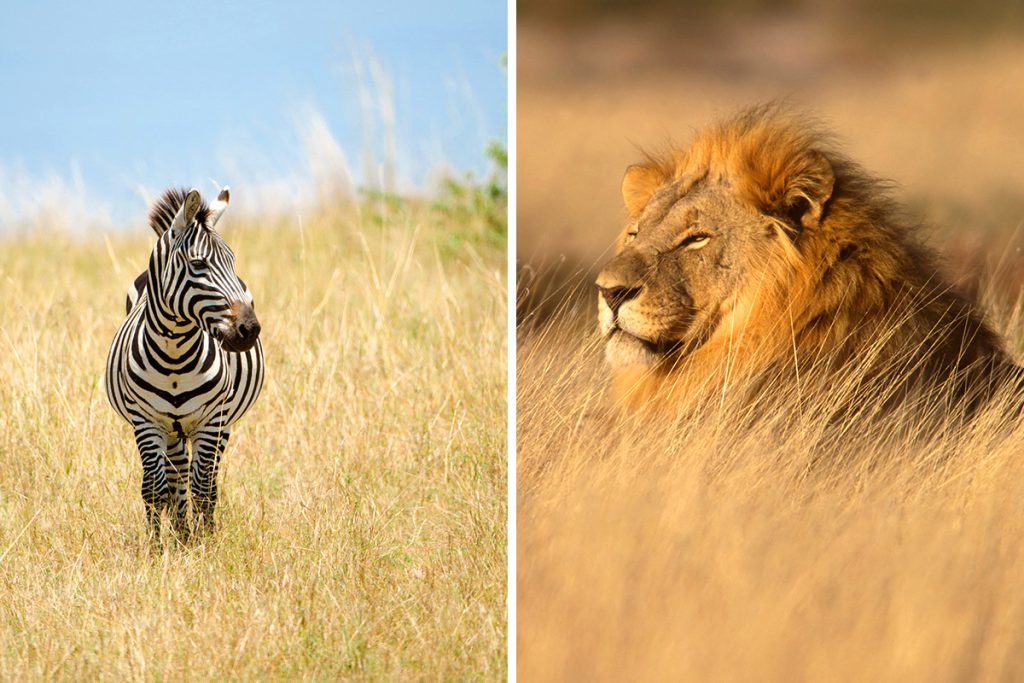Looking to explore a unique blend of culture and history? You’re in the right place! This intriguing journey through Namibia and South Africa awaits you. So buckle up, let your imagination wander, and embark on this captivating adventure!
History & Culture
Stepping into the realm of history and culture, let’s start with Namibia. It’s a land filled with fascinating stories etched in time.
The San people, Namibia’s first inhabitants, are believed to have lived here for thousands of years. Their rock paintings and petroglyphs tell stories of a time long past. Colonial influences also play a huge role in Namibia’s history. The Portuguese, Germans, and British have all left their imprint here, shaping the nation’s unique cultural fabric.
Then there’s South Africa. Bursting with diverse ethnic groups, it’s a melting pot of cultures, each with its own rich history. The Zulus, Xhosa, and Afrikaners, among many others, have all contributed to the rich tapestry of South Africa’s history. From the struggles against apartheid to the triumph of democracy, the story of South Africa is inspiring, to say the least.
When comparing the histories of the two countries, it’s clear that both have endured periods of struggle and change. But through this, they have forged their own distinct identities. Each one’s history is not merely a collection of dates and events but a narrative that continues to shape the nation’s present and future.
In terms of culture, both Namibia and South Africa celebrate diversity. Namibia’s culture is a unique fusion of its indigenous tribes and colonial influences. On the other hand, South Africa, known as the ‘Rainbow Nation,’ thrives on the amalgamation of its multiple ethnic groups.
In summary, both Namibia and South Africa boast rich histories and diverse cultures. Each country’s journey is unique, and their cultures have evolved from a fascinating mix of indigenous and foreign influences. It’s impossible to rank one above the other; it’s all about what sparks your curiosity more and resonates with you the most.
Attractions & Activities
Next on our journey through Namibia and South Africa is the exploration of attractions and activities these countries offer. Each destination is brimming with adventure and sightseeing opportunities, making them fascinating playgrounds for the curious traveler.
In Namibia, a unique blend of attractions awaits. Etosha National Park, a wildlife haven spanning about 8,600 square miles (22,270 square kilometers), invites you to witness the beauty of African wildlife. From lions and elephants to a plethora of bird species, it’s a real treat for nature lovers.
For history buffs, the ghost town of Kolmanskop offers an eerie yet fascinating exploration. This deserted town is a testament to a past diamond rush and the impermanence of human endeavors.
South Africa, on the other hand, offers a unique mix of natural beauty and urban charm. The iconic Table Mountain in Cape Town gives you a breathtaking view of the city and its surroundings. An adrenaline-pumping activity here is abseiling down the mountain – if you’re up for it!
Johannesburg’s Apartheid Museum gives a heart-rending insight into the country’s past, while Soweto offers an authentic taste of modern urban South African culture.
When it comes to activities, both countries are an adventurer’s paradise. While Namibia’s sandboarding down the dunes of Swakopmund gets your heart racing, South Africa’s famous Garden Route drive stuns with its scenic beauty.
Summing it up, whether it’s the untouched beauty of Namibia’s wildlife or South Africa’s blend of urban and natural attractions, each destination offers unique experiences that cater to a wide range of interests. Which thrilling adventure will you choose to embark on?
Beaches
The allure of crystal clear waters and sandy shores is universal. Comparing the beaches of Namibia and South Africa is like unveiling two unique styles of coastal beauty.
Namibia, with its Atlantic coastline spanning around 976 miles (1,572 kilometers), offers some of the most dramatic beaches in Africa. Skeleton Coast, aptly named for its eerie shipwrecks, is a surreal and hauntingly beautiful stretch of sand. This isn’t your typical sunbathing spot, but its desolate beauty is mesmerizing.
Contrastingly, South Africa’s coastline stretches about 1,739 miles (2,798 kilometers) and is dotted with vibrant and lively beaches. Camps Bay in Cape Town, backed by the Twelve Apostles mountain range, offers stunning views and cool, turquoise waters. Durban’s Golden Mile, a bustling hub of activity, teems with surfers and sun-seekers throughout the year.
The beaches in Namibia and South Africa provide different experiences. Namibia’s beaches are more rugged and remote, while South Africa’s are generally more developed and bustling with activity.
In conclusion, whether it’s the wild, desolate beauty of Namibia’s Skeleton Coast or the vibrant, pulsating life on South Africa’s Golden Mile, the choice between the two depends on what you are seeking from your beach experience. Do you want to step off the beaten path or immerse yourself in the energy of city beaches? The choice is yours to make.
Eating, Drinking & Nightlife
Delving into the gastronomic scene and nighttime vibes of Namibia and South Africa uncovers another layer of their distinct identities. A culinary journey through these countries is an exploration of their history, culture, and the spirit of their people.
Namibian cuisine offers a blend of indigenous food and German-influenced dishes, creating a unique culinary experience. Game meat, such as kudu and oryx, and seafood from the coast are staples. If you’re feeling adventurous, you might try kapana, a popular street food, which is grilled meat sold in open markets.
In South Africa, the culinary scene is as diverse as its people. From traditional African dishes like bobotie to Afrikaaner delicacies such as biltong, your taste buds are in for a treat. Cape Malay cuisine in Cape Town, with its blend of sweet and spicy flavors, is a must-try.
As for drinks, Namibian breweries produce some fine beers, thanks to the German influence. Local wines, particularly those from the vineyards along the Orange River, are also worth savoring.
In South Africa, it’s hard to overlook the country’s world-renowned wines. The wine regions of Stellenbosch and Franschhoek are home to some of the best vineyards in the world. A trip to South Africa would be incomplete without tasting their famous Pinotage.
When it comes to nightlife, Namibia’s is relatively low-key but enjoyable. Swakopmund, with its beachside bars and restaurants, is a good spot to relax in the evenings.
South Africa, especially cities like Cape Town and Johannesburg, offers a vibrant nightlife scene. Live music, bustling clubs, and stylish bars make them a paradise for night owls.
To summarize, whether you are a foodie, a wine enthusiast, or a night owl, both Namibia and South Africa have experiences that cater to you. Your preferences will guide your choice. Are you ready to embrace these exciting culinary and nocturnal adventures?
Shopping
The shopping scene in Namibia and South Africa provides another exciting dimension of exploration. Each offers a unique blend of local crafts, high-end fashion, and everything in between.
Namibia is a treasure trove for those interested in indigenous crafts. The Namibia Craft Centre in Windhoek, with over 40 shops, showcases a vast range of handmade items, from Himba-carved wooden bowls to Owambo palm leaf baskets. It’s the perfect place to find unique souvenirs that tell the story of Namibia’s diverse culture.
In contrast, South Africa offers a combination of upscale shopping malls, trendy boutiques, and bustling markets. Johannesburg’s Sandton City, one of the most prestigious shopping centers in Africa, houses a plethora of international luxury brands.
Meanwhile, Cape Town’s Greenmarket Square is renowned for its vibrant stalls selling everything from African art to beaded jewelry.
Overall, whether you’re hunting for traditional handicrafts in Namibia or seeking high-end fashion in South Africa, both destinations offer a shopping experience that’s sure to thrill and delight. So, are you ready to find your perfect souvenir and carry a piece of these countries back home?
Accommodation
Finding the right place to stay is a crucial part of your journey. Whether you’re looking for luxury or simplicity, Namibia and South Africa offer accommodations to suit all tastes and budgets.
Namibia offers a wide range of accommodations, from luxury lodges to budget-friendly guesthouses. If you’re seeking an immersive experience, consider staying at a lodge in the heart of Etosha National Park, such as the Ongava Lodge. For a budget-friendly option, Chameleon Backpackers in Windhoek provides comfort without breaking the bank.
In contrast, South Africa is known for its world-class luxury accommodations. The Silo Hotel in Cape Town, with its stunning views of Table Mountain and the harbor, promises an unforgettable stay. If you’re traveling on a budget, don’t fret. Hostels like Curiocity in Johannesburg offer clean, comfortable accommodation at a great price.
In conclusion, whether you fancy the comfort of a luxury lodge in the wilderness of Namibia or prefer the sophistication of a five-star hotel in South Africa’s vibrant cities, there are options for every traveler. So, where will you rest your head after a day of exploration?
Family-Friendliness & Children’s Activities
Creating memorable experiences for the whole family is a key aspect of travel. Fortunately, both Namibia and South Africa offer a host of activities suitable for children of all ages.
Namibia, with its abundant wildlife and open spaces, is a natural playground for kids. A visit to the Cheetah Conservation Fund offers a fun and educational experience where kids can learn about these amazing creatures and the efforts to conserve them.
South Africa, on the other hand, offers a wide range of family-friendly attractions. The Two Oceans Aquarium in Cape Town lets kids get up close and personal with marine life, while Gold Reef City in Johannesburg combines a theme park and a glimpse into the region’s gold mining history for a day of fun and learning.
To sum up, whether it’s the call of the wild in Namibia or the blend of fun and education in South Africa, both destinations provide a wealth of family-friendly activities. Which one will be your next family adventure?
Getting There & Getting Around
Reaching and navigating through Namibia and South Africa can be part of the adventure. Each provides unique modes of transportation that can enhance your travel experience.
To get to Namibia, most international travelers fly into Hosea Kutako International Airport, located about 28 miles (45 kilometers) east of Windhoek. South Africa, on the other hand, has multiple international airports, with O.R. Tambo International Airport in Johannesburg being the busiest.
Once in Namibia, renting a car is a common way to explore. Namibia’s well-maintained road network, coupled with its expansive landscapes, makes a self-drive safari a popular choice for travelers.
In South Africa, the extensive road network lends itself to self-driving. But for those who prefer public transportation, the Gautrain in Johannesburg and MyCiti bus in Cape Town provide reliable services.
In conclusion, whether it’s the expansive landscapes of Namibia best explored by car or the well-connected cities of South Africa navigated by public transport, each destination offers a unique journey. So, how do you prefer to travel and explore?
Weather
Choosing the perfect time to visit can make all the difference in your travel experience. Weather patterns in Namibia and South Africa can significantly shape your journey.
Namibia has a largely arid climate with sunshine throughout the year. Its winter, between May and September, sees daytime temperatures around 68°F (20°C) and cooler nights. This is often the best time to visit for wildlife spotting, as animals gather around water sources.
South Africa’s weather is more diverse due to its larger size and geographic variation. In Cape Town, summers (December to March) are warm and dry with temperatures averaging around 79°F (26°C). Johannesburg, in contrast, experiences summer rains and mild winters with temperatures around 63°F (17°C).
In conclusion, the sun-soaked expanses of Namibia are a stark contrast to the seasonal shifts of South Africa. Depending on what you’re looking for—be it a winter safari in Namibia or a summer beach vacation in South Africa—your ideal weather awaits.
Safety
Your peace of mind and safety are essential when traveling. While both Namibia and South Africa offer rewarding travel experiences, it’s always wise to be informed about safety.
Namibia is generally considered safe for tourists. Petty crime occurs, but it’s typically limited to Windhoek, the capital. To ensure a safe journey, stay vigilant and keep your belongings secure. Namibia’s roads are often wide and well-maintained, but long distances between towns and occasional sandstorms can make driving a challenge.
South Africa, while offering a rich array of experiences, has higher crime rates, especially in major cities. As a traveler, staying alert and informed about safe areas is advisable. From a different perspective of safety, South Africa has one of the world’s most comprehensive systems for eco-sustainability, contributing to the long-term preservation of its unique flora and fauna.
In summary, both Namibia and South Africa call for vigilance and common-sense safety practices, with an added layer of ecological safety in South Africa. Where will your safe and memorable journey be?
Cost
The budget for your trip is often a deciding factor. Knowing the cost differences between Namibia and South Africa can help you plan better.
Namibia, while offering stunning landscapes and wildlife, can be more expensive for tourists. A meal at a mid-range restaurant may cost around 200 NAD (about $11.20), while a night at a mid-range hotel could set you back around 1000 NAD (about $56).
On the other hand, South Africa, with its well-established tourism industry, often offers more for your money. A meal at a mid-range restaurant typically costs around 120 ZAR (about $6.72), and a comfortable hotel room may cost around 900 ZAR (about $50.40) per night.
In conclusion, whether you’re leaning toward the raw natural appeal of Namibia or the diverse experiences offered by South Africa, considering your budget is key. So, which destination fits your pocket?
Which Is Better – Namibia or South Africa?
Choosing between Namibia and South Africa can be like choosing between two fascinating tales, both steeped in history and culture.
Namibia offers a unique blend of indigenous and German influences, seen in its language, architecture, and customs. South Africa, on the other hand, presents a rich tapestry of multicultural influences from its Zulu, Xhosa, and Afrikaans people, and from its apartheid past.
In terms of attractions and activities, both countries offer distinct experiences. Namibia is the go-to place for outdoor enthusiasts, with its awe-inspiring landscapes like the Namib Desert and Etosha National Park. South Africa offers a more varied array of experiences, from the wildlife of Kruger National Park to the urban vibe of Cape Town and Johannesburg.
When it comes to beaches, South Africa’s Garden Route and Durban’s Golden Mile are more appealing to beachgoers, with their warm waters and sandy stretches. However, Namibia’s Skeleton Coast, while not suitable for swimming, offers a unique landscape of shipwrecks and seal colonies.
As for gastronomy and nightlife, South Africa’s culinary scene, with its Cape Malay curries and braai (barbecue) culture, combined with vibrant nightlife in cities like Cape Town and Johannesburg, makes it more appealing. While Namibia’s cuisine is more meat-centric and the nightlife is calmer.
The shopping experience varies too. Namibia offers unique tribal crafts and gemstones, while South Africa boasts larger malls and a wider range of products, from locally designed clothes to gold and diamond jewelry.
For accommodation, Namibia offers high-end safari lodges and guesthouses that provide intimate and personalized experiences, whereas South Africa offers a wider range of options, from luxury hotels in cities to charming bed and breakfasts in wine country.
For family-friendly vacations, South Africa tends to have more children’s activities, including kid-friendly safaris and interactive museums. But Namibia, with its emphasis on wildlife and nature, can provide an enriching and educational experience for children too.
In terms of getting there and around, South Africa, with more international flight connections and a more extensive public transportation system, is generally easier to navigate than Namibia. However, Namibia’s well-maintained roads make for a great self-drive vacation.
When it comes to weather, Namibia’s sunny, dry climate makes it a year-round destination, while South Africa’s diverse climate offers the thrill of different experiences depending on the season.
For safety, Namibia generally enjoys a reputation for being safe for tourists, while in South Africa, some safety concerns exist in certain areas. However, with basic precautions, both can be safely traveled.
In terms of cost, South Africa generally offers more value for money, with a wide range of options to suit various budgets, while Namibia can be a bit pricier, especially for accommodations.
In summary, your choice between Namibia and South Africa will depend on what you’re looking for in your adventure. Are you drawn to the undisturbed, arid beauty of Namibia or the vibrant, diverse landscapes of South Africa? Your unforgettable journey awaits in both!

